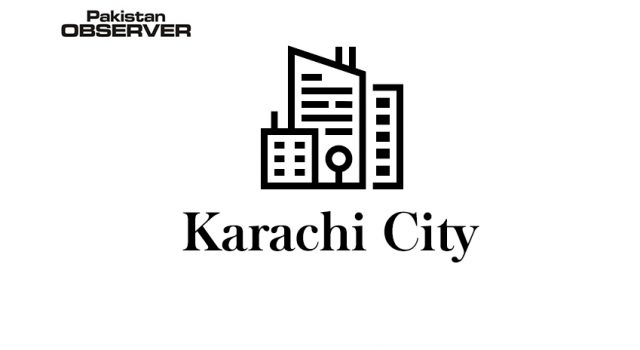Ramish Sultan
The petroleum sector, especially the oil refiners, has had a difficult last few years as they faced a multitude of challenges that took a toll on their bottom-line.
However, the recovery in gross refining margins offers a ray of hope and might give a chance to petroleum companies to recuperate some of the losses sustained during the downturn.
The energy sector holds an important position in Pakistan’s economy. The country’s oil refineries produce petrol, diesel, jet fuel, and other types are fuels that are consumed by virtually all individuals and industries.
These fuels form the backbone of the day-to-day operations of many industries, such as airlines and logistics, as well as government institutions and the armed forces. The energy sector is also one of the country’s biggest employers and taxpayers.
The past few years, however, have been tough for the energy sector. For example, in the years following the Pakistani Rupee’s devaluation that started in 2018, the petroleum companies incurred substantial foreign exchange losses.
This was followed by the arrival of the pandemic that pushed oil prices down to historic lows. As fuel demand plunged, the earnings of many petroleum companies got scarred by inventory losses in 2020.
At the same time, the petroleum companies witnessed a large and sudden drop in demand for furnace oil – one of their key products – after power producers switched to using LNG to produce electricity.
Even the well-established, state-backed companies like PSO saw a 50% drop in furnace oil sales in FY-2020 that severely hurt their earnings. The smaller, private-sector players barely survived.
Since then, oil prices have bounced back, but the Pakistani Rupee has lost ground against the greenback, dropping to Rs200 per USD, and furnace oil consumption has remained low and inconsistent.
Around eight months ago, some of the refineries had to temporarily shut down operations because they had nowhere to store furnace oil and nobody was buying the fuel.
They couldn’t continue operations, because that would have meant even more furnace oil production. One refiner even had to sell the fuel to international buyers at a loss-making price, just so it could free up some storage and resume operations.
However, the business environment has finally improved, which gives Pakistan’s energy sector an opportunity to get back on a firmer financial footing and play its part in the country’s economic development.
The Gross Refining Margins, or GRMs, have risen to record levels in the international market. The GRM is what an oil refiner expects to make by buying and processing one barrel of crude oil to produce refined petroleum products like petrol and diesel.
Generally, the higher the GRM, the more profit a refiner can make. The GRM, which is typically in the single digits, has risen to all-time highs of around $30 per barrel, giving much-needed relief to Pakistani refiners.
The refiners won’t just be making profits. The surge in GRM gives them an opportunity to undertake the expensive upgradation and expansion projects.
Oil refining is a capital-intensive business and a project that results in better refining capabilities and capacities often comes with a hefty price tag of hundreds of millions to billions of dollars.
The Pakistani refiners who have struggled in the past don’t have huge cash reserves that they can use to modernize or expand their plants.
Remember, the modernization work is badly needed and practically all Pakistani refiners have announced plans to enhance and expand their oil refining capabilities.
Cnergyico Pk Limited is among those refiners who have already started working on such projects. Cnergyico is Pakistan’s biggest refiner in terms of takeaway capacity, capable of processing up to 156,000 barrels per day of crude oil.
It aims to increase its capacity to 200,000 bpd and install more than a dozen state-of-the-art equipment to become a modern deep-conversion refiner that can produce large quantities of environmentally friendly and Euro-V compliant fuels.
Cnergyico as well as other refiners need billions of dollars to finish the upgradation and expansion work.
This unprecedented scale of development in the refining space will create substantial job opportunities and trigger economic development in the country. It can practically eliminate Pakistan’s reliance on imported fuels, saving the country precious foreign exchange.
This will also make the country self-sufficient in fuel production, thereby enhancing energy security. But all of this requires substantial capital investment, which can only come if refiners take advantage of the current situation and make profits.
These earnings will then flow back into the sector as investment, pushing Pakistan towards economic growth.
However, some industry observers have called for capping refining margins to curtail prices at petrol pumps. This lopsided approach will do no good and will only be harmful.
Capping margins will not only deprive the refining industry but also Pakistan from capitalizing on this rare opportunity.
Besides, capping margins can’t push retail petrol and diesel prices back to Rs100 per liter, considering margins are still a minor part of the fuel price equation. The pump prices are still primarily determined by international crude oil prices and the Rupee-Dollar parity, not GRM.
Moreover, crude oil prices and GRM are both highly cyclical in nature. Although they are up currently, history and economics have taught us that they will come down.
Putting a ceiling on margins, therefore, will be a useless exercise. Besides, capping GRM will bring even more government intervention in the energymarket where there is already excessive regulation that has hurt the industry’s performance.
It is, therefore, important that refiners are allowed to capture the high margins and policymakers must work together with the industry’s participants to ensure the country’s oil refineries grow and expand.
The authorities should take steps that can accelerate the modernization of the oil sector which can have a positive impact on the country’s economic growth.










